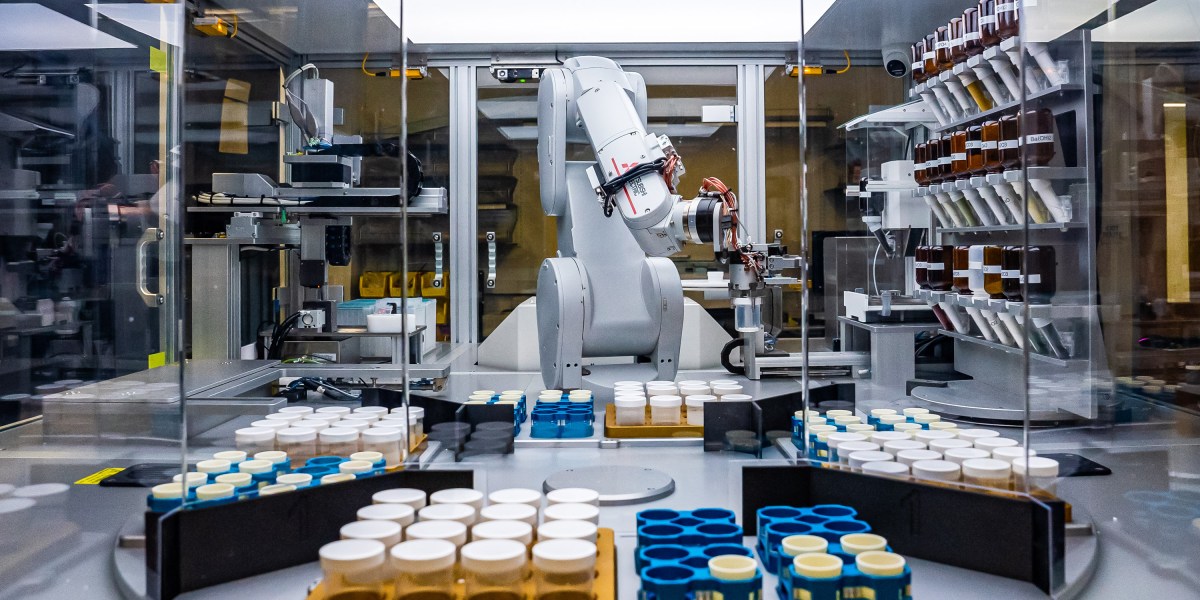From electric vehicle batteries to solar panels and microprocessors, innovative materials have the potential to revolutionize technological advancements. However, the traditional process of discovering these materials often involves extensive trial-and-error research spanning months or even years.
In a bid to expedite this discovery process, Google DeepMind has introduced a groundbreaking tool harnessing the power of deep learning. Known as Graphical Networks for Material Exploration (GNoME), this technology has already demonstrated its prowess by predicting structures for a staggering 2.2 million novel materials. Out of these predictions, over 700 materials have been successfully synthesized in laboratories and are currently undergoing testing. The details of this innovative tool have been documented in a paper recently published in the esteemed journal Nature.
In tandem with the development of GNoME, the Lawrence Berkeley National Laboratory has unveiled an autonomous laboratory in collaboration with DeepMind. This cutting-edge facility leverages GNoME’s discoveries in conjunction with machine learning algorithms and robotic systems to autonomously engineer new materials, eliminating the need for human intervention. Google DeepMind envisions that these advancements signify the immense potential of artificial intelligence in scaling up the exploration and development of novel materials.
Drawing parallels to AlphaFold in the realm of materials discovery, Ju Li, a professor of materials science and engineering at the Massachusetts Institute of Technology, likens GNoME to a game-changer. AlphaFold, another brainchild of DeepMind unveiled in 2020, accurately predicts protein structures, revolutionizing biological research and drug development. With the aid of GNoME, the repository of known stable materials has expanded nearly tenfold, reaching a count of 421,000.
Acknowledging the pivotal role of materials in diverse technologies, Dogus Cubuk, the materials discovery lead at Google DeepMind, highlights the limited knowledge base of humanity concerning stable materials. Despite the critical role of materials, the existing pool of known stable materials remains relatively sparse.
Traditionally, scientists have combined elements from the periodic table to create new materials. However, the vast number of potential combinations renders this approach inefficient. Researchers typically iterate on existing structures, making incremental modifications in the hopes of uncovering novel compositions with desirable properties. Nonetheless, this conventional method is laborious and time-intensive, often constraining the scope for unexpected breakthroughs.
To surmount these challenges, DeepMind integrates two distinct deep-learning models within GNoME. The first model generates over a billion structural variations by tweaking elements within known materials, while the second model disregards existing structures and solely evaluates the stability of new materials based on chemical formulas. This dual-model approach significantly broadens the spectrum of potential material compositions.
Following the generation of candidate structures, GNoME’s models assess the decomposition energy of each structure—a crucial metric indicating the material’s stability. Materials that are deemed “stable” exhibit minimal decomposition, a critical attribute for engineering applications. GNoME identifies the most promising candidates, which then undergo further scrutiny based on established theoretical frameworks.
This iterative process is repeated multiple times, with each iteration incorporating new discoveries into subsequent training rounds. Initially, GNoME exhibited a precision of approximately 5% in predicting material stability, which significantly improved over successive learning cycles. Ultimately, GNoME achieved an impressive prediction accuracy of over 80% for the first model and 33% for the second model.
While the concept of leveraging AI models for material discovery is not entirely novel, the scale and precision of GNoME set it apart from previous endeavors. Trained on a dataset at least an order of magnitude larger than its predecessors, GNoME represents a significant leap in material discovery capabilities.
According to Chris Bartel, an assistant professor of chemical engineering and materials science at the University of Minnesota, the computational cost and scale limitations that previously constrained similar calculations have been overcome by GNoME. Yifei Mo, an associate professor of materials science and engineering at the University of Maryland, emphasizes that GNoME enables the scalability of computations with enhanced accuracy, offering substantial cost savings and efficiency gains.
Beyond the identification of novel materials, the synthesis and validation of their utility are equally crucial. Berkeley Lab’s autonomous laboratory, dubbed the A-Lab, has seamlessly integrated GNoME’s discoveries into its operations, employing a fusion of robotics and machine learning to optimize material development processes.
The A-Lab autonomously formulates up to five initial material compositions based on insights gleaned from existing scientific literature. Subsequent experiments refine these formulations, with the laboratory dynamically adjusting its approach based on experimental outcomes.
Researchers at Berkeley Lab report that the A-Lab successfully conducted 355 experiments over a span of 17 days, synthesizing 41 out of 58 proposed compounds—an impressive rate of two successful syntheses per day. In contrast, traditional human-led laboratories often face prolonged timelines for material synthesis, sometimes stretching into months or years.
Kristin Persson, leading the Materials Project at Berkeley Lab, underscores the transformative potential of these AI-driven tools in expediting hardware innovation across various sectors, including energy and computing. Persson emphasizes the critical need for hardware innovation, particularly in the realm of clean energy, to address pressing global challenges such as climate change.
Bartel envisions that the materials identified through these advancements hold promise for a wide array of technologies spanning batteries, computer chips, ceramics, and electronics. Notably, GNoME’s identification of 528 promising lithium-ion conductors among other discoveries could potentially enhance the efficiency of batteries.
Despite the groundbreaking discoveries facilitated by GNoME, the transition of these materials from the laboratory to commercial applications typically entails a lengthy timeline. Dogus Cubuk envisions streamlining this process to a mere five years, a significant improvement over the current industry standard.
In conclusion, the convergence of deep learning, robotics, and materials science heralds a new era of accelerated innovation in material discovery and development. Through the synergy of AI-driven tools like GNoME and autonomous laboratories like the A-Lab, researchers are poised to unlock a wealth of opportunities for transformative advancements in various industries, paving the way for a more sustainable and technologically advanced future.






